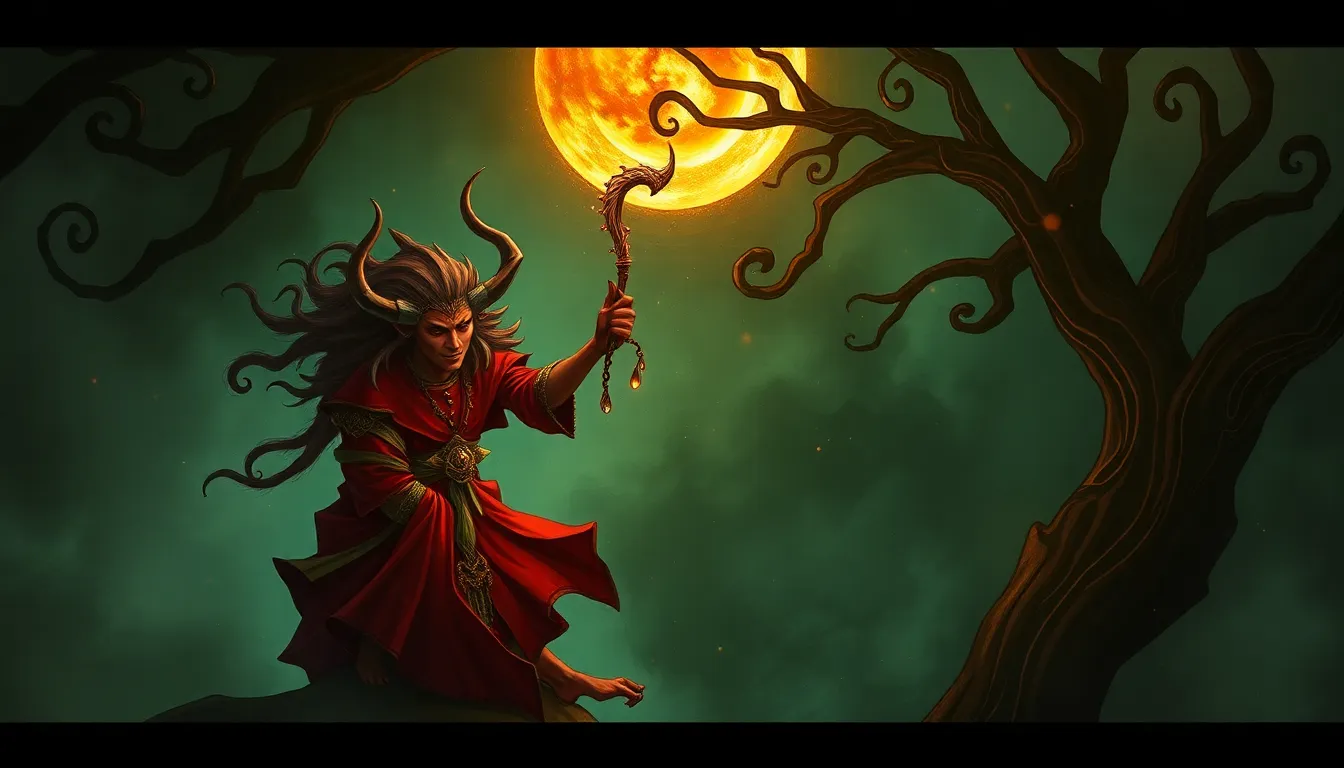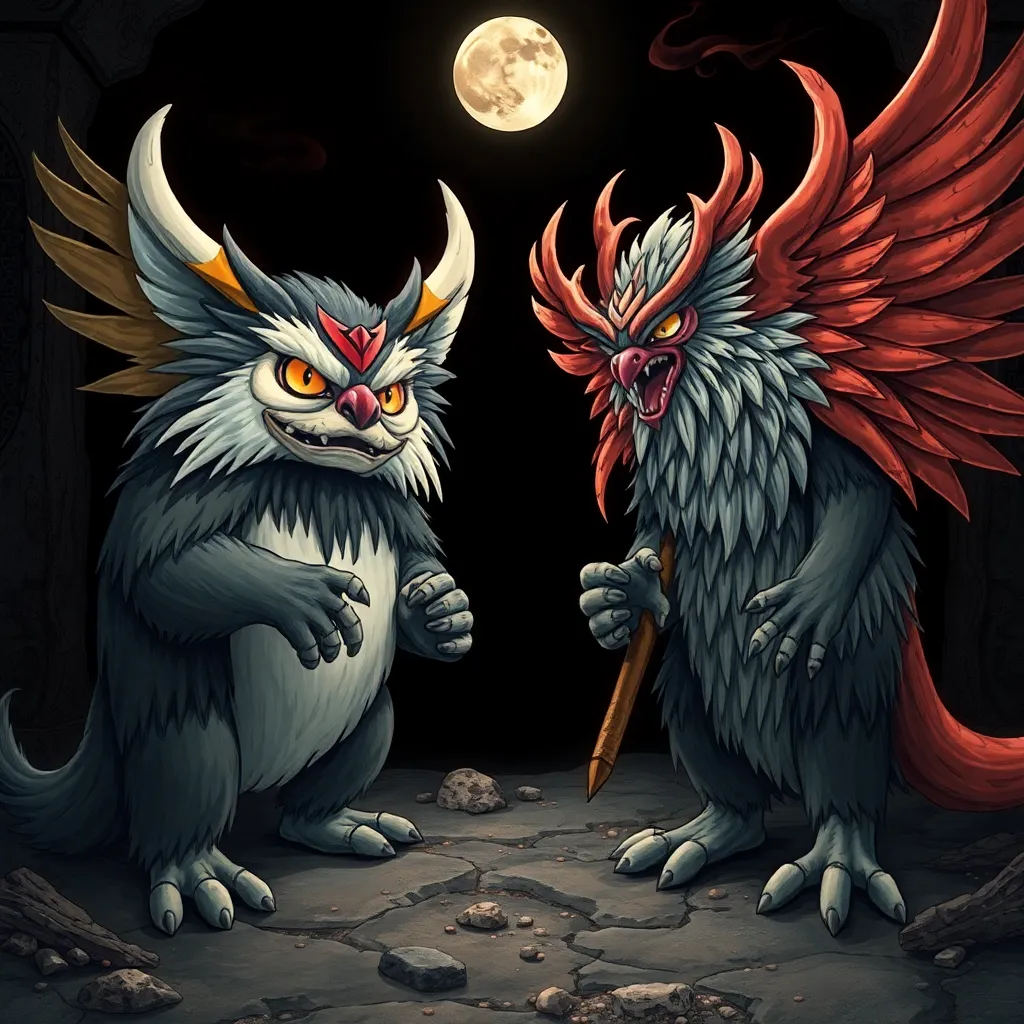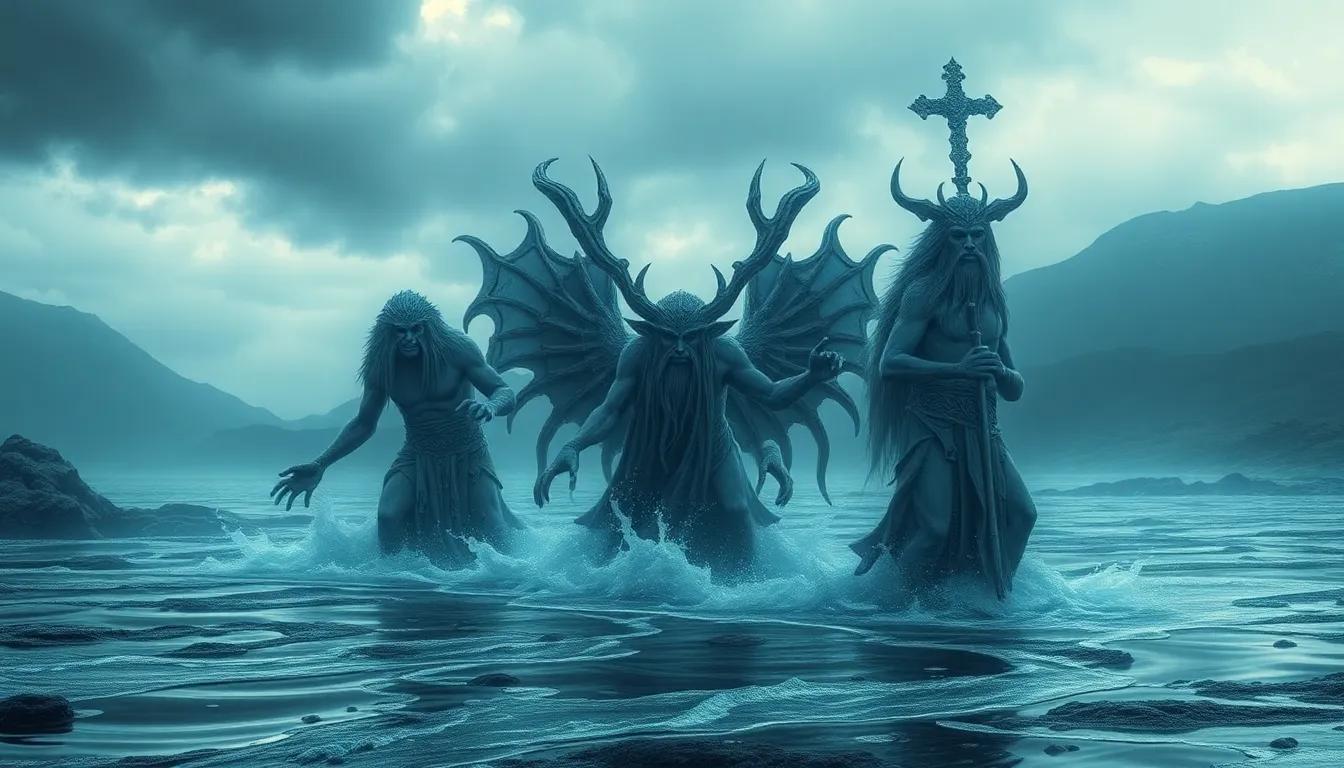The Trickster’s Playbook: Common Themes in Folklore
I. Introduction to the Trickster Archetype
The trickster figure is a compelling and complex character found in folklore across cultures. Defined by their cunning, often mischievous nature, tricksters serve as both creators and disruptors within narratives. They play a crucial role in cultural storytelling, often embodying the duality of human experience—balancing wisdom with folly, and virtue with vice.
In this article, we will explore the historical context of trickster tales, their characteristics, the role of humor, and how these figures critique societal norms. We will also examine tricksters across cultures, their moral ambiguity, and their presence in contemporary media, concluding with a look at their psychological significance and enduring legacy.
II. Historical Context of Trickster Tales
The origins of trickster motifs can be traced back to ancient cultures, where these figures often appeared in creation myths and moral tales. From the sly fox in Aesop’s fables to the Native American Coyote, tricksters have been pivotal in explaining the world around us.
Over time, the trickster archetype has evolved, reflecting changes in society and culture. In some eras, tricksters were revered as wise figures, while in others, they were seen as threats to social order. Oral traditions have played a significant role in shaping these narratives, allowing them to adapt and persist through generations.
III. Characteristics of the Trickster
Trickster figures share several common traits:
- Cunning: They often employ cleverness and intelligence to outwit others.
- Deception: Tricksters use trickery to achieve their goals, which can lead to both humorous and serious consequences.
- Duality: They embody the dual nature of creation and destruction, often acting as catalysts for change.
- Gender and Identity: Tricksters often challenge traditional gender roles and social identities, reflecting the fluidity of human experience.
IV. The Role of Humor and Wit
Humor is a fundamental aspect of trickster tales. It serves as a vehicle for conveying moral lessons and engaging audiences. Through clever tricks and humorous situations, tricksters highlight the absurdity of human behavior and societal norms.
Some notable examples include:
- The antics of Anansi the Spider, who uses his wits to outsmart larger animals.
- Coyote’s blunders in Native American folklore, which often teach lessons about humility and respect for nature.
Comedy not only entertains but also invites audiences to reflect on their own lives and the world around them.
V. Tricksters as Cultural Critics
Tricksters often challenge societal norms and authority figures, acting as cultural critics who expose hypocrisy and injustice. Their subversive nature allows them to question the status quo, often leading to social change.
Examples of tricksters as agents of change include:
- Loki from Norse mythology, who disrupts the order of the gods.
- Anansi, who teaches lessons about power dynamics and the importance of storytelling.
Through satire and parody, trickster narratives encourage audiences to reconsider their beliefs and values.
VI. Trickster Tales Across Cultures
Trickster figures appear in various cultures, each adapting the character to fit local beliefs and values. Some of the most notable tricksters include:
- Anansi: A West African spider known for his cleverness and storytelling.
- Coyote: A Native American figure symbolizing the unpredictable nature of life.
- Loki: A Norse god who embodies chaos and mischief.
While these figures share common traits, their stories also reflect unique cultural contexts, illustrating the rich tapestry of human experience.
VII. The Moral Ambiguity of the Trickster
The trickster’s actions often blur the line between heroism and villainy, prompting audiences to grapple with moral ambiguity. Tricksters can be both protagonists and antagonists, leading to ethical implications that challenge traditional narratives.
Lessons learned from trickster behavior include:
- The importance of adaptability and resourcefulness.
- The necessity of questioning authority and societal norms.
- The recognition that actions can have both positive and negative outcomes.
VIII. Tricksters in Contemporary Media
In today’s literature and film, trickster figures continue to resonate with audiences. Modern adaptations often reflect contemporary issues, making these characters relevant in today’s society.
Notable examples include:
- The character of Jack Sparrow in the “Pirates of the Caribbean” series, who embodies the charm and cunning of traditional tricksters.
- The Joker in DC Comics, who represents chaos and challenges moral boundaries.
These characters demonstrate the ongoing relevance of trickster themes, inviting new interpretations and discussions.
IX. The Psychological Perspective on Tricksters
From a psychological standpoint, the trickster archetype offers insights into human behavior and the psyche. The trickster can be seen as a reflection of our inner conflicts, representing the struggle between order and chaos.
Psychological theories suggest that:
- The trickster embodies the shadow self, highlighting our hidden desires and impulses.
- Engaging with trickster narratives can facilitate personal growth and self-discovery.
- Tricksters play a role in collective identity formation, helping societies process shared experiences and values.
X. Conclusion: The Enduring Legacy of the Trickster
In conclusion, trickster figures in folklore are rich in complexity and meaning. They serve as cultural critics, embody humor, and challenge societal norms. Through their moral ambiguity and adaptable nature, they continue to resonate across cultures and generations.
The themes discussed in this article highlight the trickster’s enduring legacy, reminding us of the importance of questioning authority, embracing creativity, and recognizing the multifaceted nature of human experience. As we navigate our own lives, the lessons of the trickster remain ever relevant, inviting us to explore the balance between chaos and order in our own narratives.



